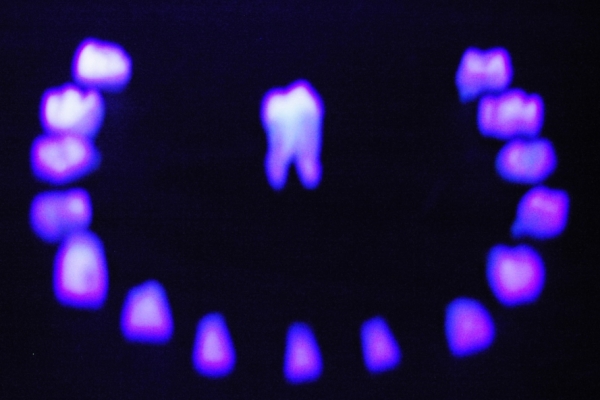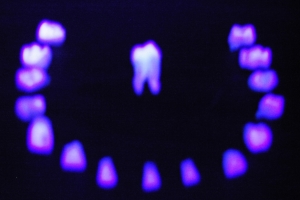
Create a selection
Deciduous teeth – commonly referred to as milk teeth – are a first set of teeth, which are pushed out and replaced by the growth of adult teeth in humans and many other mammals. In humans, these teeth begin to form in the sixth week of embryo development within the womb. They continue to grow until they erupt from the gums in the first few years of a child’s life. For the next few years, the adult teeth grow in the gums underneath the milk teeth. The forming adult teeth absorb the roots of the milk teeth as they grow. This gradually weakens the hold that the milk teeth have in the gums, leading to them dropping out from the age of six onwards. After the milk tooth has gone the adult tooth is free to push through the gum into its permanent setting.
Teeth form in living organisms by a process known as biomineralisation, where hard minerals are formed in the body. Calcium phosphate (also known as hydroxyapatite) is a key constituent of the tooth enamel, and is responsible for its hardness. As a whole, the tooth contains many different materials, from soft connective tissue in the core to the harder inorganic components in the dentine. Interestingly, the calcium and phosphorous crystals cause the tooth enamel to fluoresce blue under UV light. Dentine also fluoresces but in a different colour to the enamel. The fluorescence of dentine is green and is visible in areas where cavities in the enamel reveal the dentine underneath, or in the root of the tooth where enamel never forms.
Sample ID: 353
Particularities
- Donated by
- Zoe Laughlin
- Maker
- Zoe Laughlin
- Selections
- Categories
- Animal
- Curiosities
- Fluorescent
- Relationships
- Baby | Biomineral | Calcium | Dentine | Enamel | Fluorescent | Human | Phosphorous | Teeth | White
Add materials you find interesting to your own selections.
Use the  button to select a material and get started.
button to select a material and get started.

